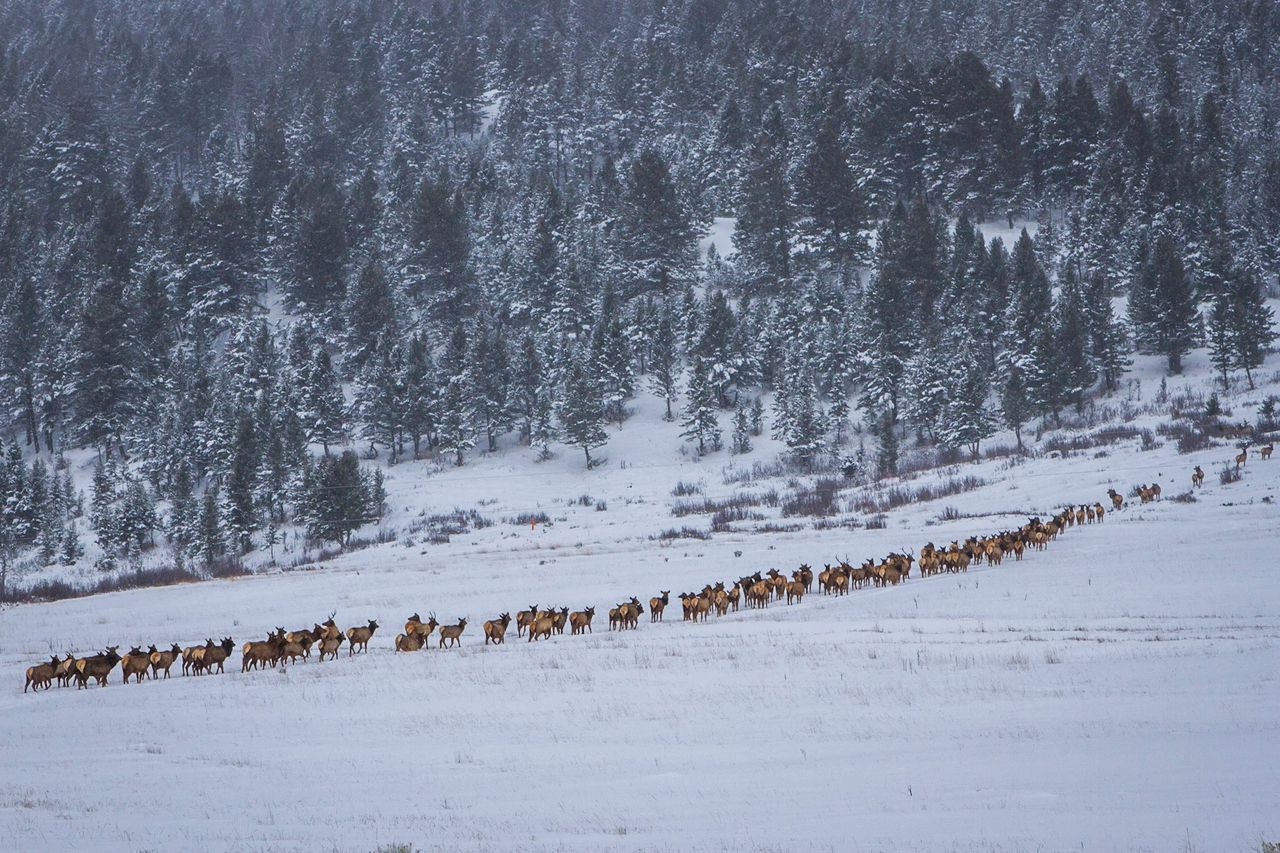
Published in the Post Register, August 17, 2019
When I first came to the Yellowstone region over 40 years ago, I fell in love with the area and wanted to learn as much as possible. I listened to old-timers and read historical accounts and recent research. It’s a process that continues to this day. There’s so much to learn.
I wondered, “How do the animals survive winter?” I learned about different survival strategies – the physiological and behavioral adaptations wildlife use to cope with the harsh winters, including migration.
I read Native American accounts of tribes following game herds to winter ranges. I heard old-timers tell their own tales and stories handed down from their homesteading parents and grandparents about herds of game passing through in fall and spring. I read about tracking collared animals to determine ranges and migration routes. As a hunter, I waited for winter snows to push the elk out of the park and start them on their way to their winter range. I visited winter ranges in the Madison Valley, Jackson and Paradise Valley. I “horn hunted” as elk passed through in the spring, following the “green-up” (as it was known locally) and dropping last year’s antlers as new growth replaced them.
Since moving to Island Park, I have had a front-row seat to watch migrating elk headed west to Montana’s Madison Valley in the fall and east to Yellowstone in the spring. I didn’t set out to learn specifically about big game migrations, but I couldn’t help it – they were an integral and obvious part of life in the Yellowstone area for as long as anyone could remember.
But never, in the 40+ years I’ve lived here, in hundreds of accounts, both written and verbal and volumes of published research, has anyone ever suggested that the migrations were man-made and/or a conspiracy designed to take people’s land away. Until now when I am hearing all sorts of crazy claims connecting migrations, wildlife corridors and conspiracy. Personally, I’ll take centuries of experience over that kind of unfounded and ridiculous speculation any day.
Forty years ago, cars were slower, roads were narrower, there were fewer people and visitation to Yellowstone was less than half what it is today. Elk and other wildlife moved much more freely over the landscape and their migrations were barely noticed except by those directly affected – hunters, landowners and biologists.
But things change. More people, more houses, faster cars, wider highways and an increasing lack of connection with the natural world have led to the potential loss of this amazing and valuable phenomenon. Conservationists aren’t responsible for these changes, so-called “progress” is. Conservationists only seek to find that balance between what used to be and what’s coming, to hang on to what we love about the area in the face of uncertainty as to what the future may hold.
I applaud the many ways individuals, communities, non-profits, state and federal agencies are working together for conservation and to find that balance.
Nancy Olson is a resident of Island Park.


